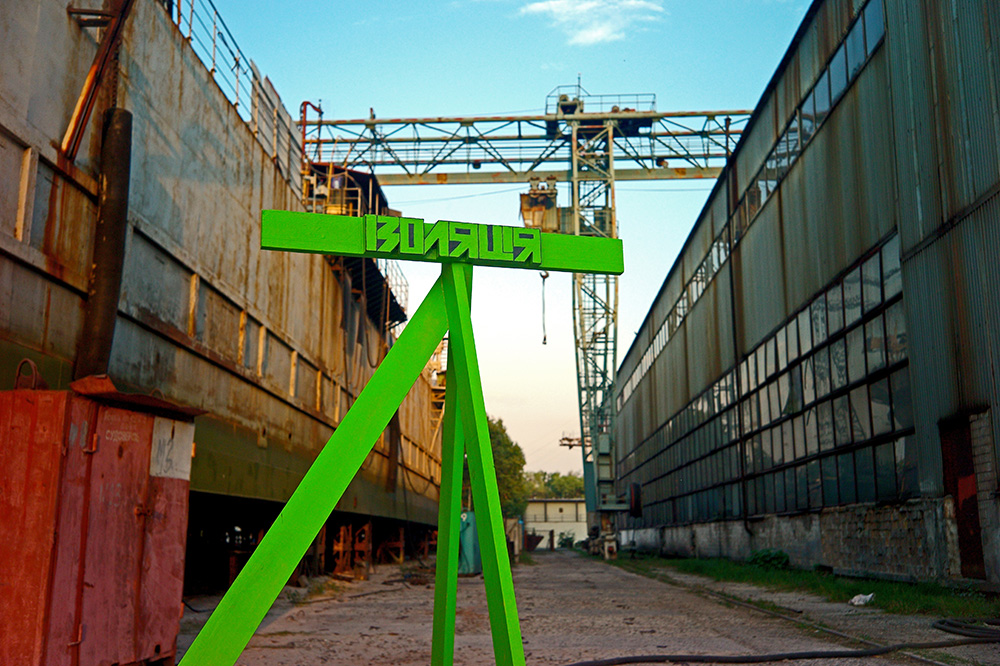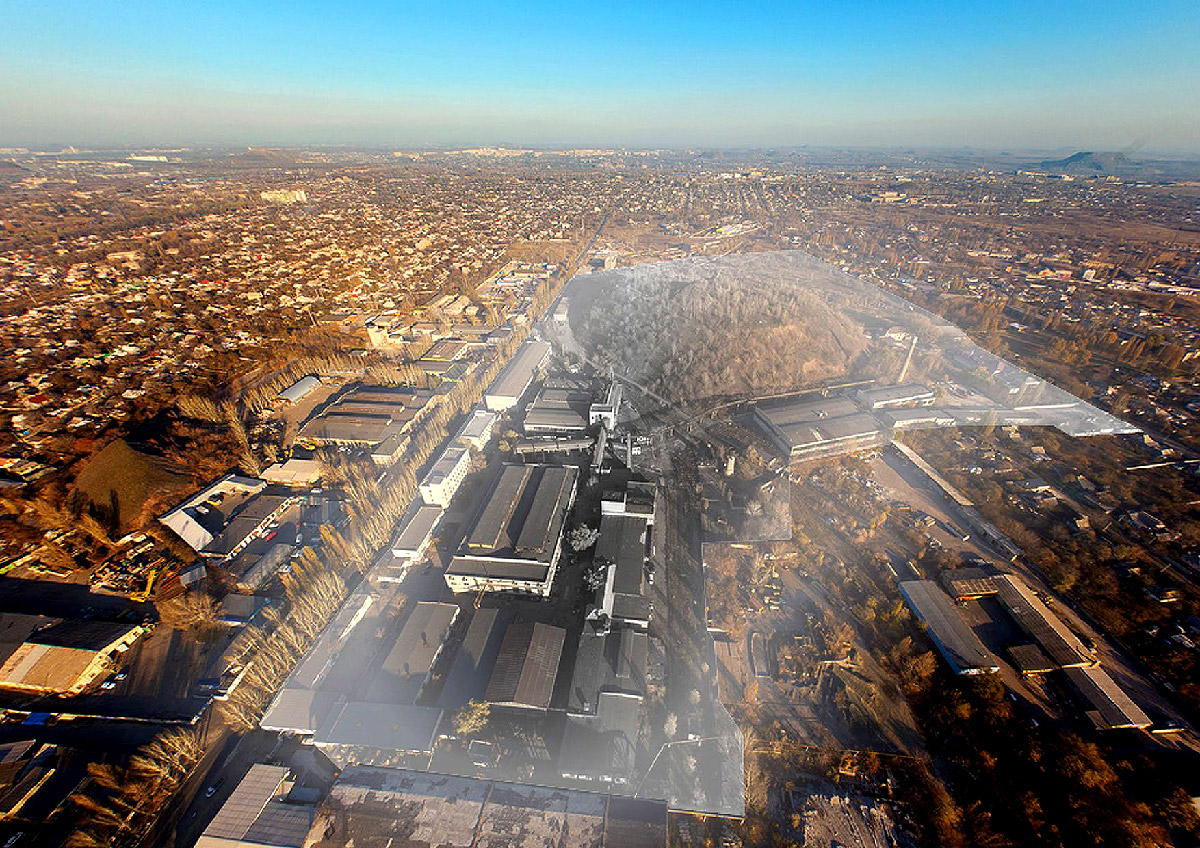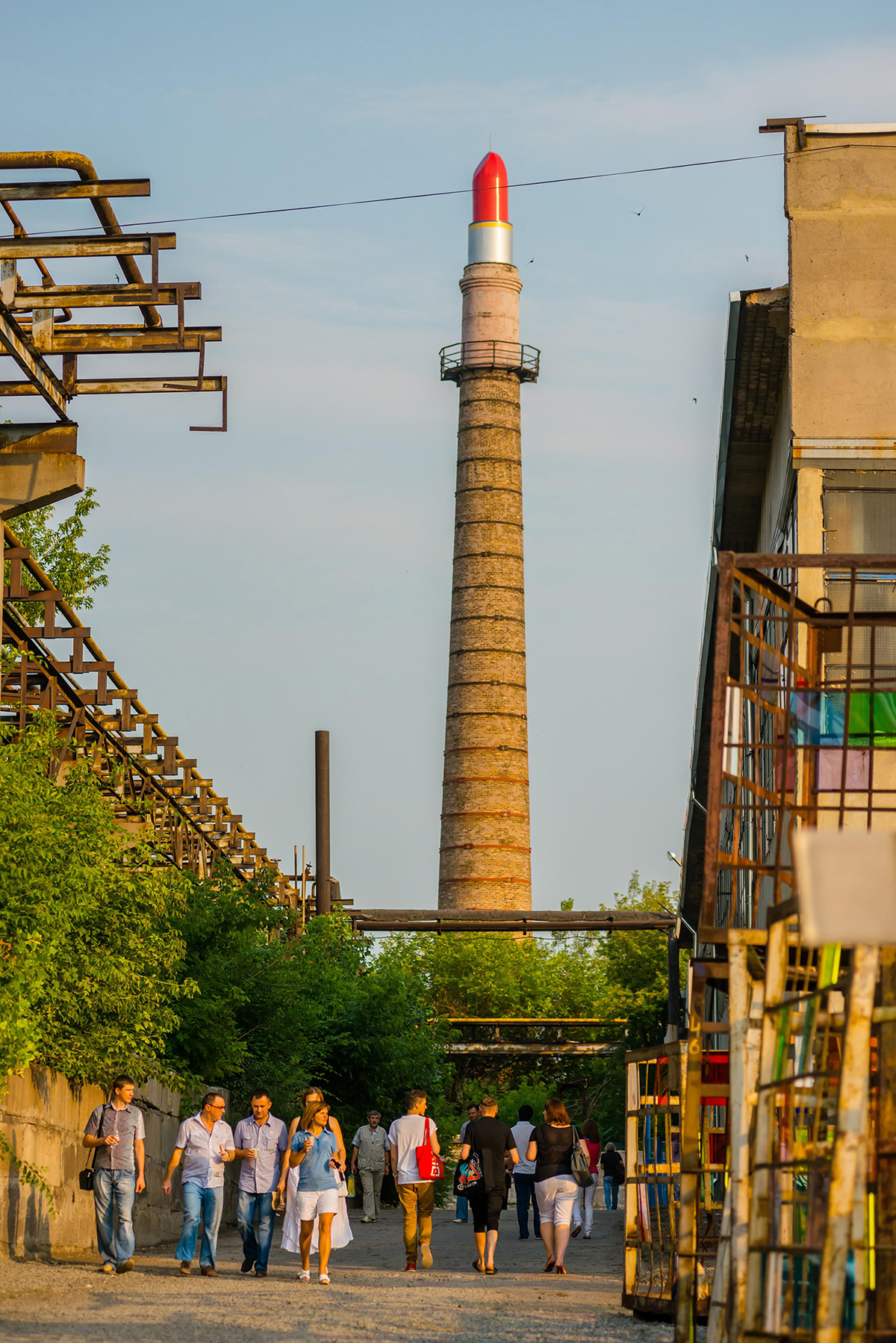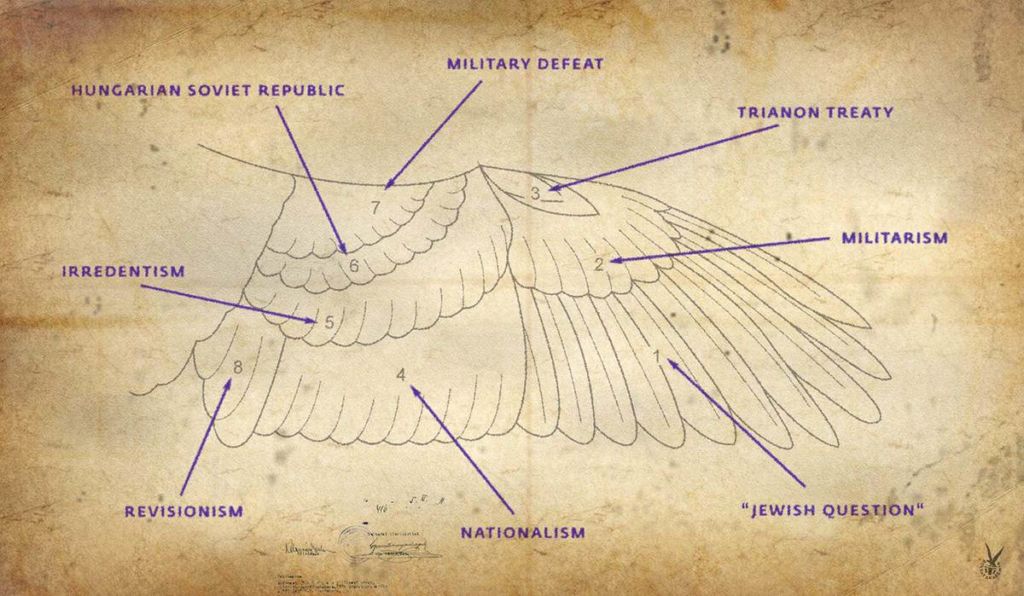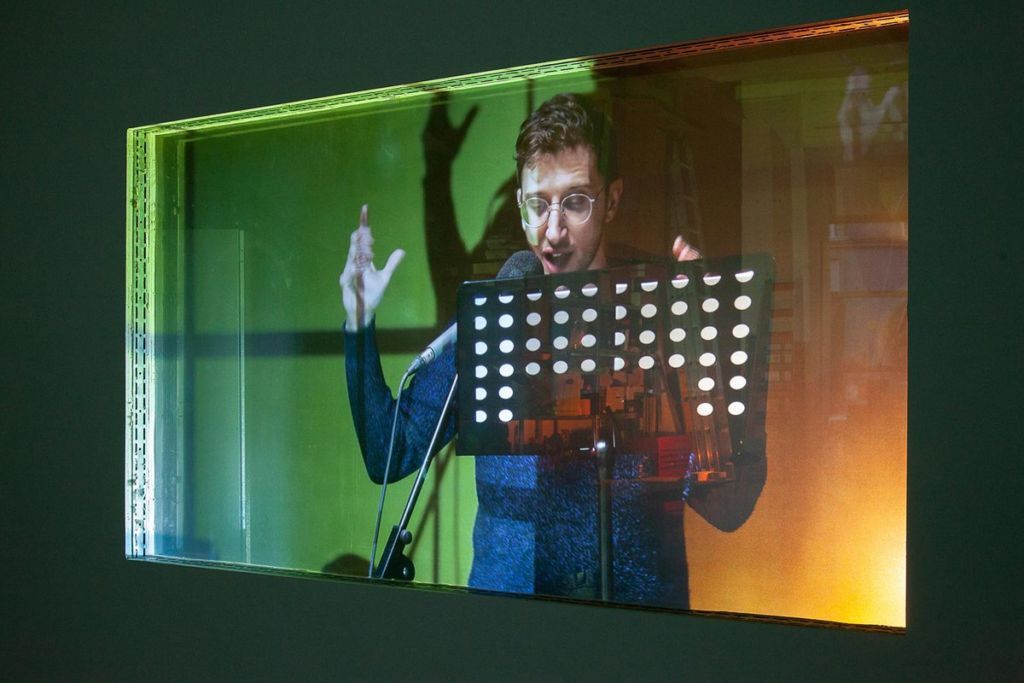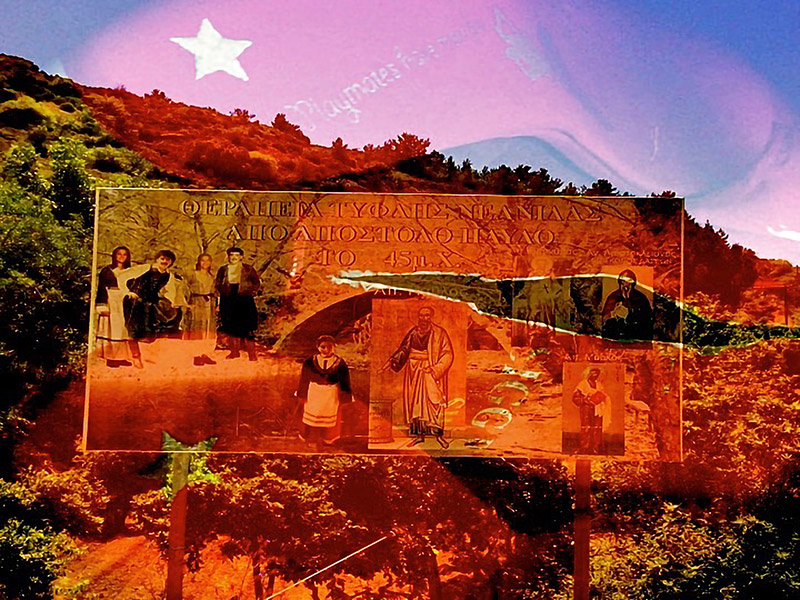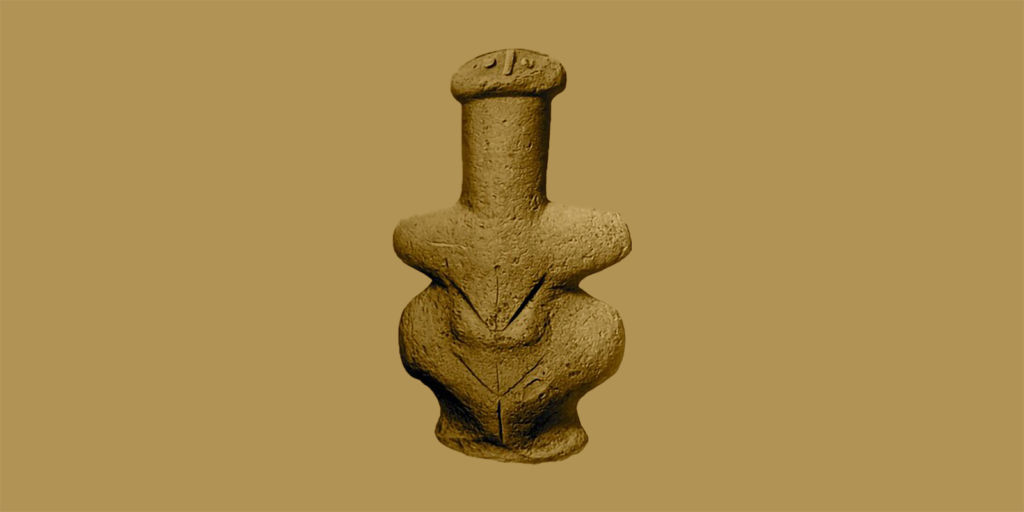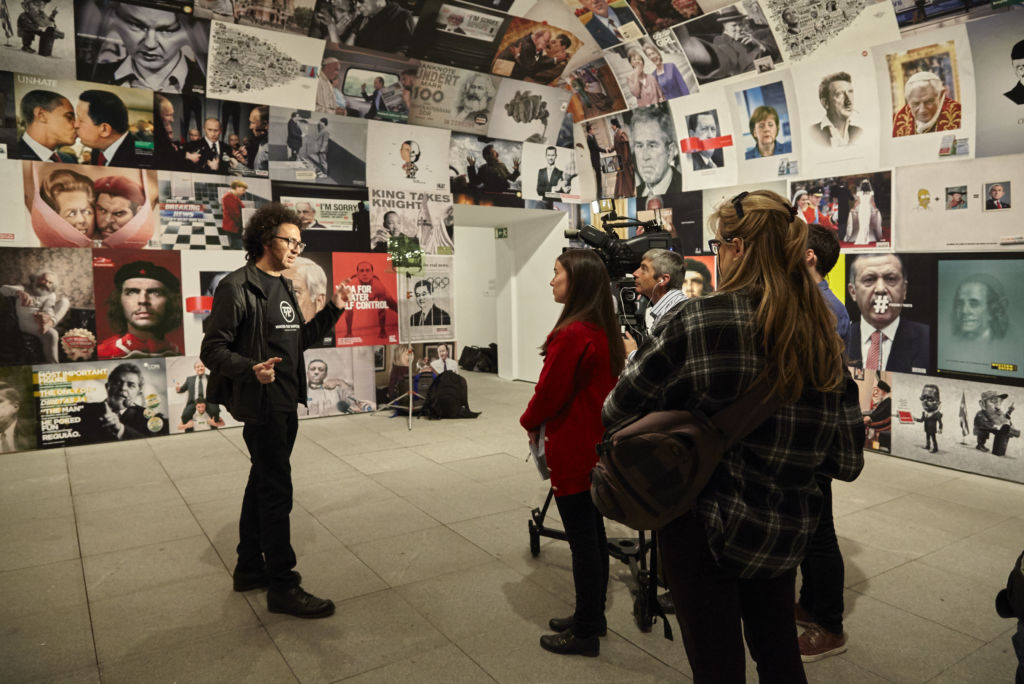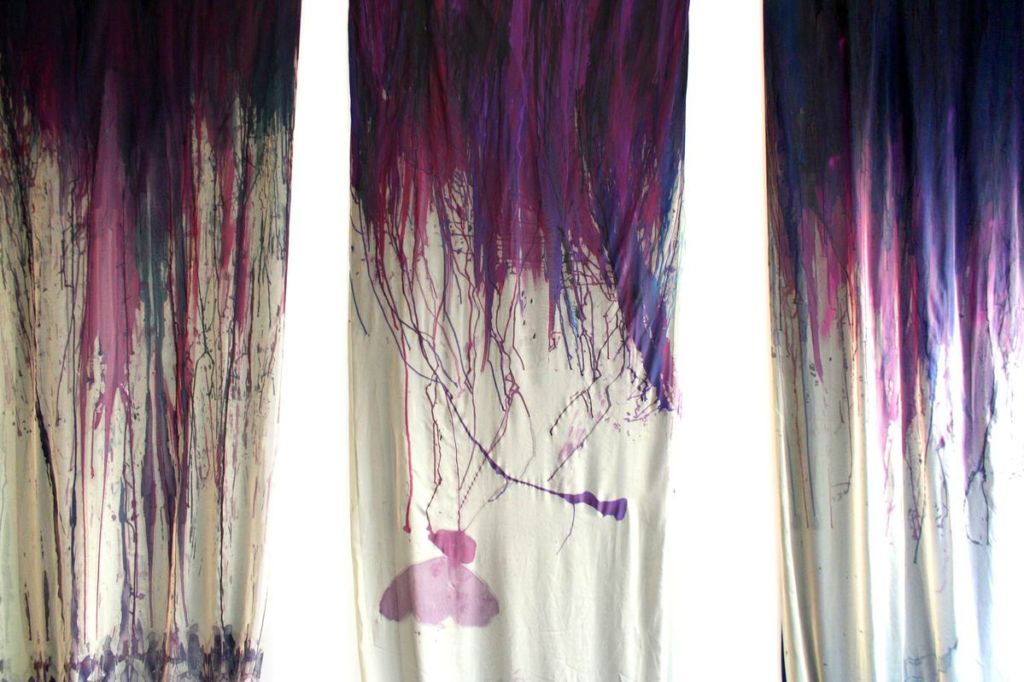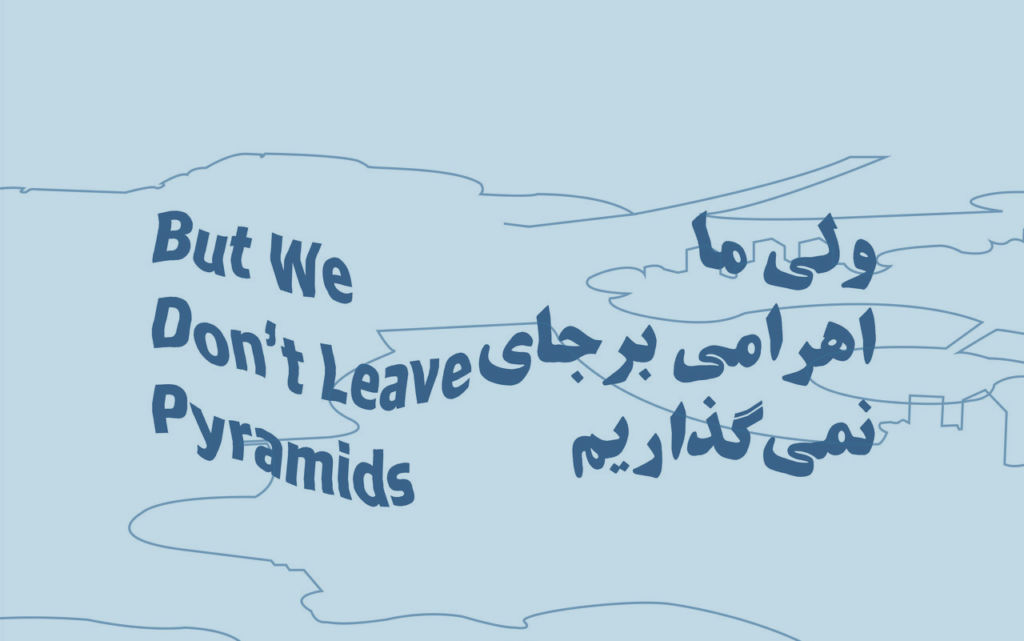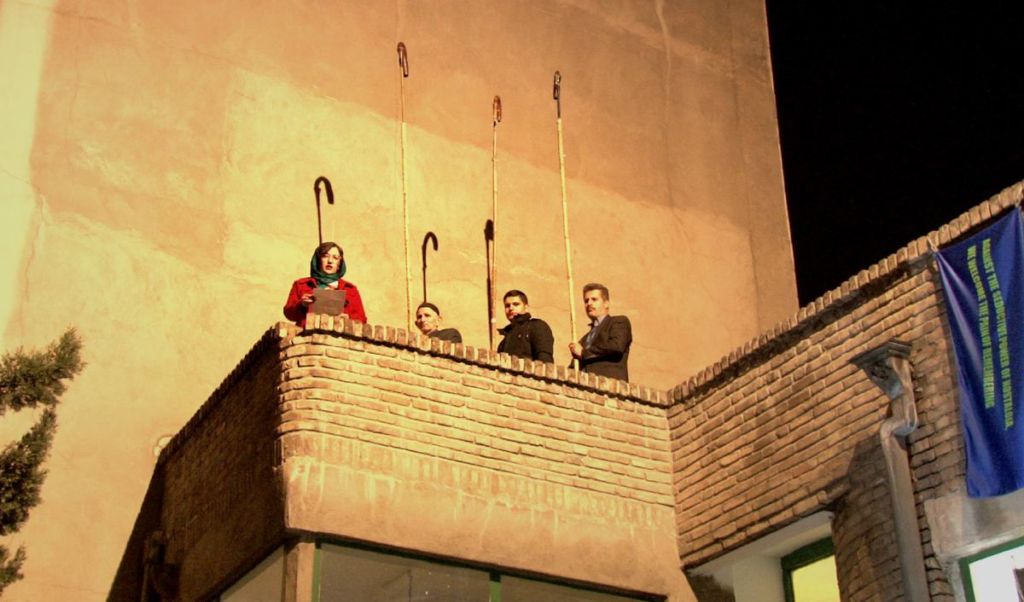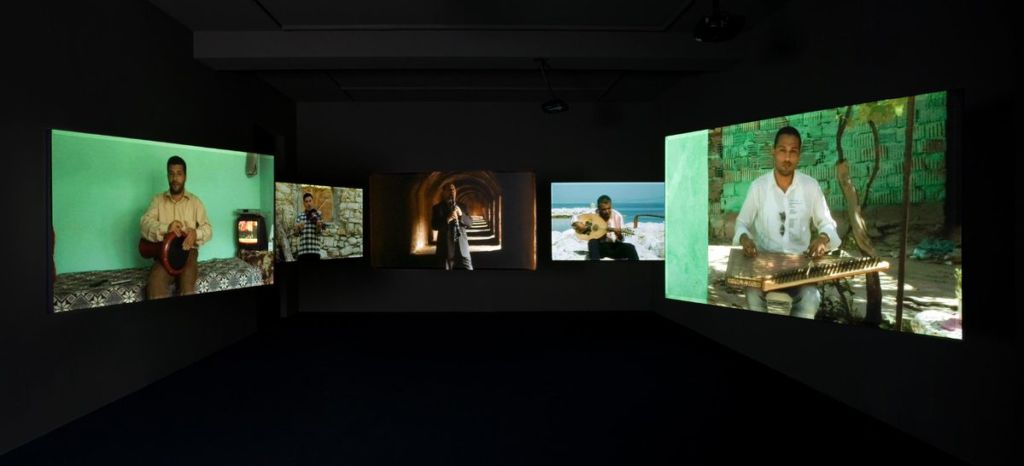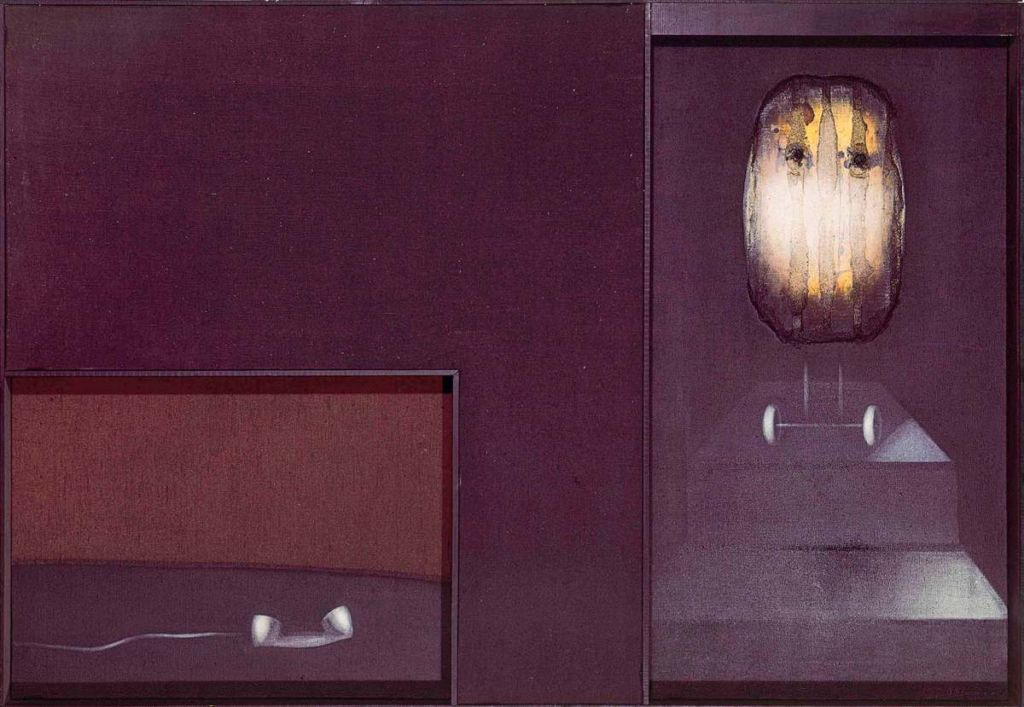IZOLYATSIA foundation is a non-profit non-governmental platform for contemporary culture founded in 2010 on the territory of a former insulation materials factory in Donetsk, Ukraine. On June 9, 2014, the territory were seized by the militia of the self-proclaimed “Donetsk People’s Republic”. The foundation has evacuated its team and since then it continues to perform its mission in Kyiv. IZOLYATSIA is a multidisciplinary cultural project open to all genres of creative expression. It is a point of intersection for all those passionate about cultural and social change. The Foundation has three intertwined directions of activity: art, education and projects geared at activating Ukraine’s creative sector.
Interview with her president Luba Michailova
By Switch (on Paper)
Switch (on Paper): You come from a family of important industrialists in Ukraine. How did this undertaking come about, and what exactly are its activities?
Luba Michailova: My father belonged to the generation of Red Directors. As a young Soviet engineer, he build a company in Donetsk from the very beginning in the early 1960s – a period of modernisation of Soviet industry – and has been the company’s Director for 50 years. In its heyday, Izolyatsia produced insulation materials for the building and construction industry, power and nuclear stations, gas industry and even for the Soviet defence system. The factory supplied its products to all Soviet Republics and Socialist countries. Around 1000 people worked at the plant.
But Izolyatsia was not only the place for work: it also had facilities for the community needs around its territory – kindergarten, canteen, club, orchestra, hostel, etc. Since my childhood, I have learned what “social responsibility” means, when a healthy community becomes a foundation of the society. This is what I inherited from my father and I am very thankful to him for this.
When the company stopped all activities after the collapse of the Soviet Union, it was not only the issue of production termination and unemployment – a large populated area died as well, as the social infrastructure stopped functioning. With an idea to bring new life to this post-industrial territory in 2010, we decided to start a new page in history by founding IZOLYATSIA. Platform for Cultural Initiatives at the premises of the old Izolyatsia factory. My father was the first supporter of this idea.
S.o.P: In 2010 you created a contemporary art foundation in Donetsk on a closed down 14 acre industrial complex belonging to your family. What does the word IZOLYATSIA mean? What were your missions?
L.M: IZOLYATSIA literally means “isolation”, the name was inherited from the factory producing insulation materials, so it conveys the idea of preservation, protection from external deteriorating factors. It reflects the fragile status of culture in Ukraine: back in 2010, we were the only cultural institution of this kind in Donetsk. There was no real cultural establishment in Donetsk: no curators, art critics, active contemporary artists, even those who would know how to hang an artwork properly. Therefore, our initial goal was not only to create a cultural product, but also to raise a group of professionals in the field, to show people in Eastern Ukraine that it is possible to make a career in culture.
Ever since the beginning, we have been acting in three intertwined directions: site-specific art projects, education programmes and creative industries. While in Donetsk, IZOLYATSIA has held a series of international art residencies: among them, Partly Cloudy, curated by Hasselblad Award-winning photographer Boris Mikhailov; Turborealism, getting together aspiring artists from New Zealand, Brazil, UK, France, Germany, and Ukraine to study and rethink the local context of Donbas; Where is the Time?.
In collaboration with Galleria Continua, inviting artists as diverse as Kader Attia, Daniel Buren, Leandro Erlich, Moataz Nasr, Hans Op de Beeck, and Pascale Marthine Tayou to re-appropriate time through in situ spatial interventions; IZOFON, a musical residency featuring experimental, rock, and contemporary classical composers and musicians giving lectures and creating site-specific music.
We also organised several major art exhibitions, including ones by Cai Guo-Giang, Rafael Lozano-Hemmer, Jennifer Dalton, and others. But equally important for us was to invite young and acclaimed Ukrainian artists, authors and designers for the Switch On program: Lubko Deresh made a creative writing workshop, Maria Kulikovska spoke of the video art, Hamlet Zinkovsky read a lecture ‘Why Do We Need Art?’. At their lectures and masterclasses for the Donetsk youth, they shared their knowledge, skills, but even more importantly, they gave a sense of perspective, showing teenagers that there are many ways of achieving success in the cultural field. We have also nurtured a professional art production team and started one of Ukraine’s first fabrication labs – IZOLAB.
S.o.P: At the time you wanted the foundation to develop a zone for a creative economy. How did you imagine relations within this economy, and the artists’ residencies and their production?
L.M: We realised that producing works of our artist-in-residence programmes required multiple stages and many professionals involved, and this was missing in Donetsk. We felt a great need for a creative industry in Ukraine, and through our initiatives, we tried to give life to a new class of cultural workers independent of oligarchs. Creative industries are instrumental to building a true democracy, as they are born within local communities and rely on solidarity and trust between people, instead of serving the corporate interest of fat cat politicians and big industrialists. Over the years, five of our volunteers have become full members of IZOLYATSIA crew, we keep on collaborating with many freelancers on a permanent basis, thus forming a working environment inciting creativity, research, and free thought.
S.o.P: How do you explain that the foundation’s building was taken over on June 9, 2014 by the pro-Russian militia “the popular Republic of Donetsk”? I suppose this can be because the site looks over the city, and has a large network of underground tunnels. Do you think there may be other reasons, for example ideological or political reasons in relation to your family?
L.M: IZOLYATSIA has always been very clear in our social messages: fostering democracy, defending human rights. Though we have never supported any political power in particular, we have always had a strong political stance, and obviously, this annoyed local authorities very much. In 2013, before the occupation, we have held TechCamp Donetsk 2.0, a workshop in digital technology for the use of NGOs, supported by the United States and attended by the US Ambassador. The event was interrupted by a group of unidentified individuals, supposedly payed by the authorities, who broke into the territory holding slogans like “Internet Is No Place for Revolution” or “Say NO to Arab Spring in Donetsk”. Some of them held flags of the “Donetsk people’s republic”, one year before the actual military upheaval…
It was no secret to us that local politicians were getting prepared for this occupation long before April 2014, when the administrative buildings in Donetsk were finally seized by the “DPR”. They had previously shown interest in our premises, because of the bunkers and bomb shelters, so the strategic importance of the former factory was certainly one of the reasons for the take-over as well.
S.o.P: The evacuation of your staff was extremely brutal, traumatic. The militia also took over part of your collection, and then in several stages (between summer 2014 and spring 2015) they destroyed the in situ works, often in a spectacular way, as we can see on the film that has been circulating on the web showing the dynamiting of a work by Pascale Marthine Tayou. Apart from reasons of political propaganda, how do you explain such acts?
L.M: It may sound harsh, but lack of education was definitely among the reasons. People were very hostile towards things they did not understand, contemporary art being one of them. Moreover, because of the propaganda, they perceived everything new and unusual as ‘American’ (as opposed to Soviet, i.e. traditional and ‘moral’), and therefore detrimental to the youth. This is why the militiamen stated that the artworks at IZOLYATSIA had nothing to do with art, that they were ‘decadent’ and ‘pornographic’. The paradoxical symbiosis of Soviet and Russian Orthodox values prevailing in the “DPR”, as well as in nowadays Russian Federation, represents all forms of Western (non-Russian) culture as alien and degraded and as posing a real threat to the moral health of the people.
Another obvious reason that has to be mentioned is financial. We should keep in mind that all the metal installations were sold as scrap, the whole site was looted and many spaces used for storing stolen cars. In fact, it is hard to say what motivated the mercenaries in the first place, ideology or commercial reasons. Most probably, it was a mixture of many factors.
S.o.P: The Foundation is now housed at the old shipyard in Kiev. Most of the founding staff followed you. Was this re-housing the result of an agreement or a partnership with the government or did it stem from your choice only?
L.M: IZOLYATSIA was the first exiled cultural institution in independent Ukraine (i.e. since 1991). Our case was unique and alarming, so we addressed the Ukrainian government, soliciting support. We spread the word around Ukraine and Europe (for instance, with our exhibition Culture and Conflict: IZOLYATSIA in Exile held at Palais de Tokyo (Paris), at DOX (Prague) and Heinrich Böll Foundation in Berlin), trying to show international community the danger of neglecting cultural issues. Our message was, of course, mainly to the Ukrainian society that still does not seem to notice the relation between the state of culture and political situation in the country. We have held a manifestation at the Presidential Administration of Ukraine, asking for help, but they answered with a refusal, explaining that with the ongoing war they do not have enough funds for culture.

Sergey Zakharov, House of Cards; exhibition Culture and Conflict: IZOLYATSIA in Exile at Palais de Tokyo © Dima Sergeev
Unfortunately, Ukrainian authorities are still unable to realise the potential that culture possesses in activating the society, they don’t see that the current war in Ukraine could have been avoided if culture had been given a stronger voice. We have a new government, but old functionaries. They have an idea of culture that dates back to Leonid Brezhnev’s times, the so-called Era of Stagnation, when the government only sanctioned the official, ‘ideologically correct’ art forms, de facto turning national culture into a mere decorum, sterile and harmless. This stale vision still dominates the Ukrainian Ministry of Culture that only finances ‘patriotic’ projects, encouraging propaganda rather than critical art, true historical revisionism, or a dialogue between Ukrainians in different parts of the country.
The kind of activities IZOLYATSIA carries out does not meet the declared objectives of the Ukrainian national cultural policy, which is why we must rely on ourselves. We rent the spaces of the shipyards on commercial terms, like any ordinary tenant. The choice of the place was ours alone, as we wanted to continue our mission of revitalising post-industrial areas in Ukraine. To finance our activity, we solicit grants and make use of corporate and private donations. The Ukrainian government has never supported us in any way.
S.o.P: In April 2015, the Ukrainian government decided to destroy all the works of art and all the monuments that referred to the Soviet past. Through this refusal of totalitarian regimes in general, it is Russia itself that seems to be aimed at. One might even say that we are not dealing with “decommunisation”, but rather with “derussification”. You have been collecting works of art from the socialist realism period. What you think of this political and cultural decision?
L.M: IZOLYATSIA is heading a project Soviet Mosaics in Ukraine, aimed at studying and cataloguing the mosaics of the Soviet period found throughout Ukraine: their location, status, and history of the authors. Many of these works were created by acclaimed Ukrainian artists for whom decorative art was the only way of creative expression available at the time, given the total censorship in the USSR. The artworks include true masterpieces of the Soviet Modernism, scattered around Ukraine, often found in small towns and villages. Nowadays, with the highly controversial Decommunisation law, we see many of these pieces destroyed or in danger of destruction. Needless to say that we are strictly opposed to the law in its current form.
This being sad, we acknowledge the political dimension of the law as an attempt to get rid of the colonial past of Ukraine. Since the 18th century, Ukrainian culture was oppressed in various ways by Russian authorities, starting with the liquidation of the Zaporozhian Sich, birthplace of Ukrainian political nation, by Empress Catherine in 1774, and culminating with the 1876 Ems Ukase by Tsar Alexander II, banning the use of the Ukrainian language in print. Until 1917, Ukraine was not officially recognised as a nation of its own by authorities of the Russian Empire, it was referred to as ‘Little Russia’ and its language widely regarded a Southern rural dialect of Russian, despite compelling linguistic evidence of the opposite. Bolsheviks used a different rhetoric in order to gain support from the Ukrainian population: they spoke of the ‘brother nations’ of Ukrainians and Russians. The early years of USSR were marked by a general indigenisation policy, with Ukrainian language and culture being supported by the Soviet government, but these measures were suspended by the end of the 1920s, and the following years saw repressions against Ukrainians taking their toll. In 1932-33, the artificial famine known as Holodomor killed an estimated 2.5-7.5 million Ukrainians, mostly peasants who resisted collectivisation, while in 1937, more than 200 Ukrainian writers and artists were executed or repressed by Stalin’s regime. The repressions against the so-called ‘Ukrainian nationalists’ in USSR continued until the 1980s, a notable case being the death of the Donbas-born poet Vasyl Stus in a labour camp for political prisoners in 1985.
So, the history of relationships between Ukraine and Russia has been complex and traumatic. Many of the events that occurred in Soviet times, like the Holodomor or Ukraine’s participation in WWII, were unveiled and made public rather recently, leading to heated debates in the society. There are still numerous periods of Ukrainian history in need of revision and scholarly analysis, many things need to be spoken out, discussed and re-evaluated. However, we should not keep on endlessly returning to the past and consider culture a graveyard. What Ukraine needs now is reconciliation, not hatred fuelled by ideological differences. Decommunisation in its current form is a step back, reminiscent of the destruction of churches by communists in the 1920-30s. Instead, we at IZOLYATSIA look ahead and try to see beyond the political divisions of today. We look at the past as our shared legacy that needs to be preserved, but our actions are directed into the future.
S.o.P: You would like to gear the Foundation’s activities towards educational and social missions. How do you envision these, and how do you think they might be useful to your country in the midst of the crisis that it is now going through?
L.M: Culture has a huge variety of roles and forms. Culture can help BEFORE the conflict to prevent it, AMIDST the conflict, to communicate different views and to reconcile the conflict if it is possible, AFTER the conflict to reflect on this, to show the many alternatives, solutions and again to work on conflict prevention. In fact, IZOLYATSIA advocates a view that the educational, cultural and social activities like community building, family fairs, education programmes, international projects lead to a more diverse and tolerant way of engaging with the world. So one of the most important roles culture plays is to discover this variety and diversity.
This is what happens at IZOLYATSIA’s artistic residencies. International and Ukrainian artists come to a certain place, in our case – Donetsk, Kyiv or Mariupol – and reflect on the context, history, energy and atmosphere of the place. They cooperate with the local volunteers and artists and communicate the variety of their experiences and ideas of the world. Such projects are followed by a series of lectures and artist talks for the local communities so people can share their views and enrich their understanding of different approaches and ways of living and creating. Besides, we consider the creative business development as a good practice to realise your opportunities and responsibilities, to foster the feeling of community.
Idea of creativity as an economical dimension inspired us to create a community called IZONE. This is a zone of creative industries, strongly focused on artisan handicrafts. It is a territory, which brings together such businesses as an analogue laboratory for large-size images, laboratory of digital prototyping IZOLAB, workshops for design, sewing, screen-printing and etching. It is about community, finding like-minded people, but also about the chance to earn with your own efforts and resources and again to develop your own independent opinion. The ongoing war has already demonstrated that in regions where more private businesses are established people are more conscious and less susceptible to propaganda.
Editing by Christelle Alin, Nina Campo and Alexia Nicolaïdis.
Translation by Claire Bernstein with the support of Villa Arson (Nice).
Thanks to Christelle Alin, Nina Campo and Alexia Nicolaïdis
